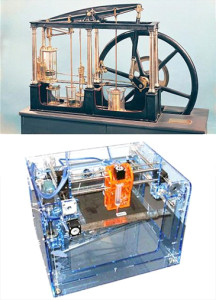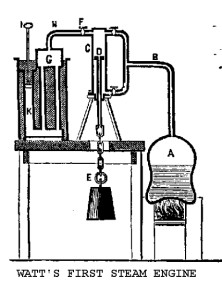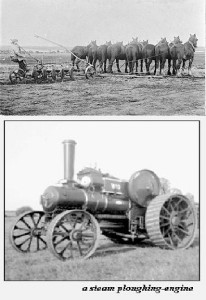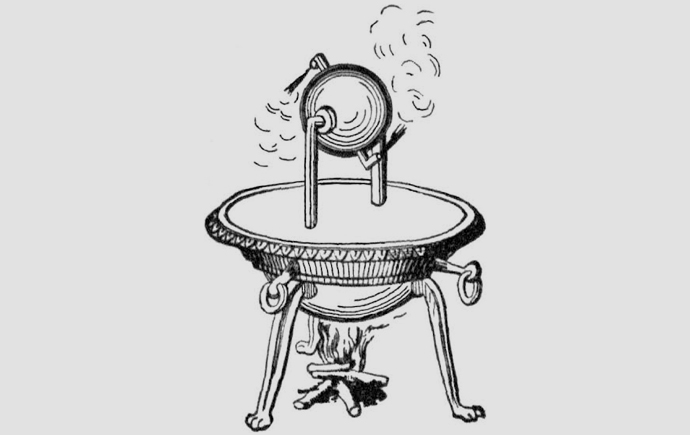 The history of steam engines goes back to almost 2000 years. But a workable steam engine was invented only about 250 years ago and of course, James Watt took all the credit for it. It took a further 50 years before it was adopted as mainstream power source. As historian Robert Thurston said, “…inventions only become successful when they are not only needed, but when mankind is so far advanced in intelligence as to appreciate and to express the necessity for them, and to at once make use of them”
The history of steam engines goes back to almost 2000 years. But a workable steam engine was invented only about 250 years ago and of course, James Watt took all the credit for it. It took a further 50 years before it was adopted as mainstream power source. As historian Robert Thurston said, “…inventions only become successful when they are not only needed, but when mankind is so far advanced in intelligence as to appreciate and to express the necessity for them, and to at once make use of them”
When 3D Printing was first conceptualized most were of the opinion that it will never go beyond prototyping. Back in 1980’s who would actually believe that 30 years down the line people will be able to 3D Print metal, wood, cookies, plastics and even bio parts? Experts even wondered if printing needed to advance beyond dot-matrix printers. When James Watt first showcased a working model of a steam engine, the local mayor supposedly blurted out ‘…it’s an interesting paraphernalia but too farfetched to be of practical use’.
 It wasn’t that one fine day James Watt was able to get his steam engine cranking and running. In fact his first working model had severe defects – one of them being that there was no one who could bore the cylinder accurately. This led to leakage and loss of power. It took a good 10 years before he could get someone to bore the cylinder perfectly – with the help of steam powered machine. Likewise, as 3D Printing gains momentum, I believe that many of the defects that we so eagerly point out will get rectified by 3D Printers themselves through superior design. Watt, for a long time knew that the earlier designs of steam engines were inefficient. A few years passed before he was able to come up with a solution and his first steam engine was a table top apparatus that could barely lift 8kgs. Today we find a lot of cynicism around 3D Printing, be it the build size, strength, material costs etc but these are the first steps that need to be overcome in a truly disruptive technology.
It wasn’t that one fine day James Watt was able to get his steam engine cranking and running. In fact his first working model had severe defects – one of them being that there was no one who could bore the cylinder accurately. This led to leakage and loss of power. It took a good 10 years before he could get someone to bore the cylinder perfectly – with the help of steam powered machine. Likewise, as 3D Printing gains momentum, I believe that many of the defects that we so eagerly point out will get rectified by 3D Printers themselves through superior design. Watt, for a long time knew that the earlier designs of steam engines were inefficient. A few years passed before he was able to come up with a solution and his first steam engine was a table top apparatus that could barely lift 8kgs. Today we find a lot of cynicism around 3D Printing, be it the build size, strength, material costs etc but these are the first steps that need to be overcome in a truly disruptive technology.
 Steam engine changed the world in ways that we in 21st century can scarcely imagine. Many of us were born far too late to appreciate their contribution to industrialization, travel, diffusion of cultures and obsolescence of animal powered machinery. There are many critics out there with a quiver full of retorts and ready to shoot down anyone who says 3D Printing is a disruptive technology.
Steam engine changed the world in ways that we in 21st century can scarcely imagine. Many of us were born far too late to appreciate their contribution to industrialization, travel, diffusion of cultures and obsolescence of animal powered machinery. There are many critics out there with a quiver full of retorts and ready to shoot down anyone who says 3D Printing is a disruptive technology.
I believe these reactions are due to a sense of insecurity for those involved in conventional manufacturing and design. Since the times of Pharaoh, animals and slaves had been used for all physical labor. It’s difficult to imagine ranch owners, who rented out horses and donkeys for logging, praising the advent of steam engines. Clearly the differences were startling between the two different types of 8 Horse Powered ploughing mechanisms.
It’s not that 3D Printing industry is fully mature. Its ability to compete with conventional manufacturing is still years if not decades away. But that’s how steam engines started off as well. It took them a good five decades to establish their supremacy. And once there, they ruled for two centuries. But we in 21st century have the benefit of rapid adaption of technology, as well as the way we do business. As such we won’t have to wait two millenniums for 3D Printing to mature entirely for mainstream use. If we were to go by Mayan calendar, we are just 2.8 years away.
Credits:
Images – Creative Commons
